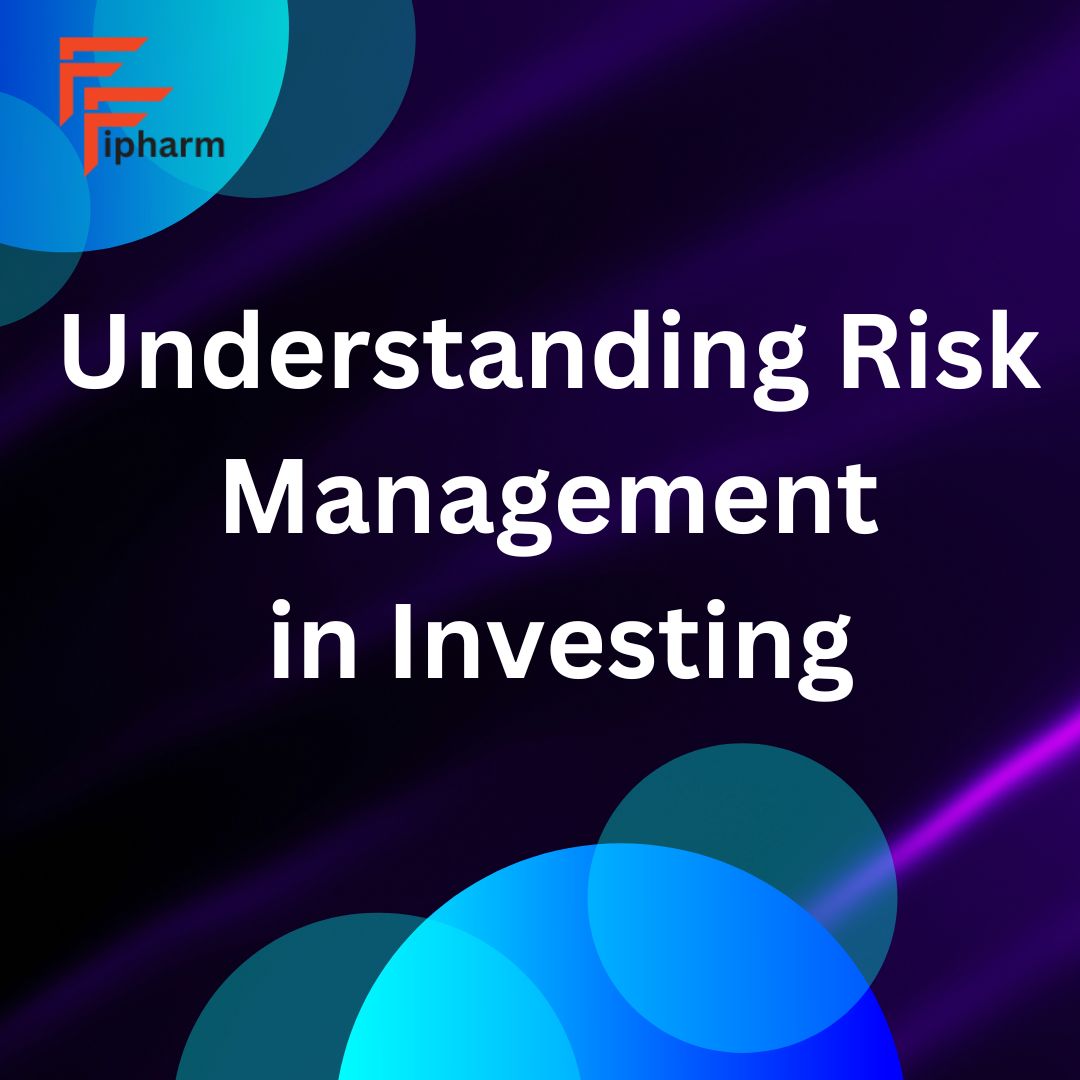In today’s dynamic financial landscape, embarking on the journey of investing can be both exhilarating and daunting. As you navigate through various investment opportunities, understanding risk management becomes paramount to safeguarding your financial future. This article aims to delve deep into the realm of understanding risk management in investing, providing you with actionable insights, strategies, and FAQs to empower your investment decisions.

What is Risk Management in Investing?
Investing inherently involves uncertainties and potential losses. Risk management in investing entails identifying, assessing, and mitigating these risks to protect your investment capital and optimize returns. It’s a proactive approach aimed at minimizing the impact of adverse events on your investment portfolio.
Importance of Understanding Risk Management in Investing
Comprehending an Understanding Risk Management in Investing is akin to laying a solid foundation for your investment journey. By embracing risk management principles, investors can make informed decisions, capitalize on opportunities, and navigate volatile market conditions with confidence.
Types of Investment Risks
Investment risks encompass a spectrum of factors that can jeopardize your financial goals. These include market risk, liquidity risk, credit risk, inflation risk, and geopolitical risk. Understanding each type of risk is essential for devising a robust risk management strategy.
Risk Tolerance and Investment Objectives
Assessing your risk tolerance and investment objectives is pivotal in formulating a personalized risk management plan. Your risk tolerance dictates how much volatility you can withstand, while your investment objectives outline your financial goals and time horizon.
Strategies for Effective Risk Management
Asset Allocation: Balancing Risk and Reward
Asset allocation involves distributing your investment capital among various asset classes, such as stocks, bonds, real estate, and commodities. A well-balanced asset allocation strategy aligns with your risk tolerance and investment goals, optimizing returns while minimizing risk.
Risk Hedging Techniques
Risk hedging techniques, such as options, futures, and derivatives, provide investors with tools to mitigate specific risks within their portfolios. These strategies enable investors to protect against downside risk while retaining exposure to potential upside gains.
Implementing Risk Management in Practice
Regular Portfolio Reviews. Regularly reviewing your investment portfolio allows you to assess performance, rebalance asset allocations, and adjust risk management strategies based on changing market dynamics. Periodic portfolio reviews empower investors to stay proactive and responsive to evolving market conditions.
Monitoring Economic Indicators
Monitoring key economic indicators, such as GDP growth, inflation rates, and interest rates, provides valuable insights into macroeconomic trends and market sentiment. By staying informed about economic developments, investors can anticipate potential risks and adjust their investment strategies accordingly.
Risk Management Tools and Techniques
Risk management tools and techniques are essential for investors to identify, assess, and mitigate potential risks effectively. These tools encompass a wide range of methodologies, including statistical models, scenario analysis, and stress testing. By leveraging advanced risk management tools, investors can gain deeper insights into their portfolios’ risk profiles and make informed decisions.
Quantitative vs. Qualitative Risk Analysis
Quantitative risk analysis involves the use of numerical data and mathematical models to evaluate the likelihood and impact of various risks. In contrast, qualitative risk analysis relies on subjective assessments and expert judgment to identify and prioritize risks based on their qualitative characteristics. Both approaches play complementary roles in comprehensive risk management strategies, offering unique insights into different aspects of risk.
Risk Management in Different Asset Classes
Different asset classes present unique risk profiles and require tailored risk management strategies. From equities and bonds to real estate and commodities, understanding the specific risks associated with each asset class is crucial for designing effective risk management frameworks. By aligning risk management strategies with the characteristics of different asset classes, investors can optimize risk-adjusted returns and diversify their portfolios effectively.
Behavioral Finance and Risk Management
Behavioral finance examines how psychological biases and emotional factors influence investors’ decision-making processes and risk perceptions. Understanding behavioral biases, such as loss aversion and overconfidence, is integral to effective risk management, as these biases can lead to suboptimal investment decisions and heightened exposure to risk. By integrating insights from behavioral finance into risk management practices, investors can mitigate the impact of cognitive biases and enhance decision-making outcomes.
Strategic Asset Allocation Strategies
Strategic asset allocation involves establishing long-term target allocations to different asset classes based on investors’ risk tolerance, investment objectives, and time horizon. By strategically allocating investments across asset classes, investors can optimize risk-adjusted returns and maintain a well-balanced portfolio over the long term. Implementing strategic asset allocation strategies requires careful consideration of market dynamics, economic trends, and individual risk preferences to achieve optimal results.
Tactical Asset Allocation Approaches
Tactical asset allocation strategies involve making short-term adjustments to portfolio allocations based on changing market conditions, asset valuations, and investment opportunities. Unlike strategic asset allocation, which focuses on long-term targets, tactical asset allocation aims to capitalize on short-term market inefficiencies and mispricings. By dynamically adjusting portfolio allocations, investors can adapt to evolving market trends and enhance risk-adjusted returns.
Dynamic Risk Management Strategies
Dynamic risk management strategies entail continuously monitoring and adjusting investment portfolios in response to changing market conditions and risk factors. These strategies prioritize flexibility and adaptability, allowing investors to respond swiftly to emerging risks and opportunities. Dynamic risk management approaches may involve employing active portfolio management techniques, employing hedging strategies, and incorporating alternative investments to mitigate downside risk and enhance portfolio resilience.
Risk Management in Derivative Instruments
Derivative instruments, such as options, futures, and swaps, offer investors powerful tools for managing risk and enhancing portfolio efficiency. By leveraging derivatives, investors can hedge against adverse price movements, speculate on market trends, and enhance portfolio diversification. However, derivative instruments also introduce unique risks, such as counterparty risk and leverage, which require careful consideration and risk management.
Environmental, Social, and Governance (ESG) Factors in Risk Management
Environmental, social, and governance (ESG) factors play a growing role in investment decision-making and risk management. Integrating ESG considerations into risk management frameworks enables investors to assess non-financial risks, such as climate change, social inequality, and corporate governance practices, that can impact long-term investment performance. By incorporating ESG factors into risk assessments, investors can identify emerging risks and opportunities, mitigate reputational risks, and align investments with their values and sustainability objectives.
Stress Testing and Scenario Analysis
Stress testing and scenario analysis are essential risk management tools that simulate adverse market conditions and assess their impact on investment portfolios. By subjecting portfolios to extreme scenarios, such as market crashes, economic downturns, or geopolitical crises, investors can evaluate their resilience and identify vulnerabilities. Stress testing and scenario analysis help investors prepare for unexpected events, refine risk management strategies, and enhance portfolio robustness in the face of uncertainty.
Risk Management in Alternative Investments
Alternative investments, such as private equity, hedge funds, and venture capital, offer unique risk-return profiles and diversification benefits to investors. However, alternative investments also present distinct risks, including illiquidity, regulatory risk, and manager risk. Effective risk management in alternative investments requires thorough due diligence, manager selection, and ongoing monitoring to mitigate risks and optimize returns.
Cybersecurity Risks and Data Privacy Concerns
In an increasingly digitized world, cybersecurity risks and data privacy concerns pose significant challenges to investors and financial institutions. Cyberattacks, data breaches, and information security vulnerabilities can compromise sensitive financial information, disrupt market operations, and erode investor confidence. Implementing robust cybersecurity measures, data encryption protocols, and incident response plans is essential for safeguarding against cyber threats and protecting investors’ assets and personal information.
Regulatory Compliance and Risk Management
Regulatory compliance is a critical aspect of risk management for financial institutions and investment firms. Adhering to regulatory requirements, such as KYC (Know Your Customer), AML (Anti-Money Laundering), and GDPR (General Data Protection Regulation), is essential for mitigating legal and regulatory risks, avoiding penalties, and maintaining trust and credibility with clients and stakeholders. Effective regulatory compliance programs encompass robust internal controls, risk assessments, and ongoing monitoring to ensure adherence to applicable laws and regulations.
Risk Management Best Practices for Individual Investors
Individual investors can implement several best practices to manage investment risks effectively and protect their financial assets. These include conducting thorough research, diversifying across asset classes, maintaining a long-term perspective, and periodically reviewing and rebalancing investment portfolios. Additionally, seeking professional financial advice, staying informed about market developments, and remaining disciplined during periods of market volatility are essential for successful risk management as an individual investor.
Continuous Learning and Adaptation in Risk Management
Risk management is an ongoing process that requires continuous learning, adaptation, and refinement to stay ahead of evolving market dynamics and emerging risks. Investors must remain vigilant, proactive, and open to new insights and strategies to navigate uncertainties effectively. By embracing a growth mindset, staying informed about industry trends, and leveraging innovative risk management techniques, investors can enhance their resilience, optimize returns, and achieve long-term financial success.
Frequently Asked Questions (FAQs)
1. How does risk management differ for long-term versus short-term investments?
- For long-term investments, investors can afford to take on higher levels of risk, as they have a longer time horizon to weather market fluctuations. In contrast, short-term investments require a more conservative risk management approach to protect against volatility.
2. Can risk management eliminate all investment risks?
- While risk management strategies aim to mitigate investment risks, they cannot eliminate them entirely. Investing inherently involves uncertainties, and no strategy can guarantee absolute protection against losses.
3. Is diversification alone sufficient for effective risk management?
- While diversification is a powerful risk management tool, it should be complemented by other strategies, such as asset allocation and risk hedging, to build a comprehensive risk management framework.
4. How can I determine my risk tolerance as an investor?
- Assessing your risk tolerance involves evaluating your financial situation, investment goals, time horizon, and emotional temperament. Various risk tolerance assessments and questionnaires are available to help investors gauge their risk tolerance levels.
5. What role does financial education play in risk management?
- Financial education is integral to effective risk management, as it empowers investors with the knowledge and skills to make informed decisions, identify risks, and implement sound investment strategies.
6. Are there any resources available to help me enhance my understanding of risk management in investing?
- Yes, there are numerous resources available, including books, online courses, financial websites, and professional advisors, that can provide valuable insights and guidance on risk management in investing.
More Post:
- Student Visa
- University of Florida
- University of London
- Canada Visitor Visa
- How to Get a Job in the USA
Conclusion
In conclusion, understanding risk management in investing is paramount for safeguarding your financial future and achieving your investment objectives. By embracing proactive risk management strategies, such as diversification, asset allocation, and risk hedging, investors can navigate market uncertainties with confidence and resilience. Remember, while risks are inherent in investing, informed decisions and prudent risk management can pave the way for long-term financial success.


